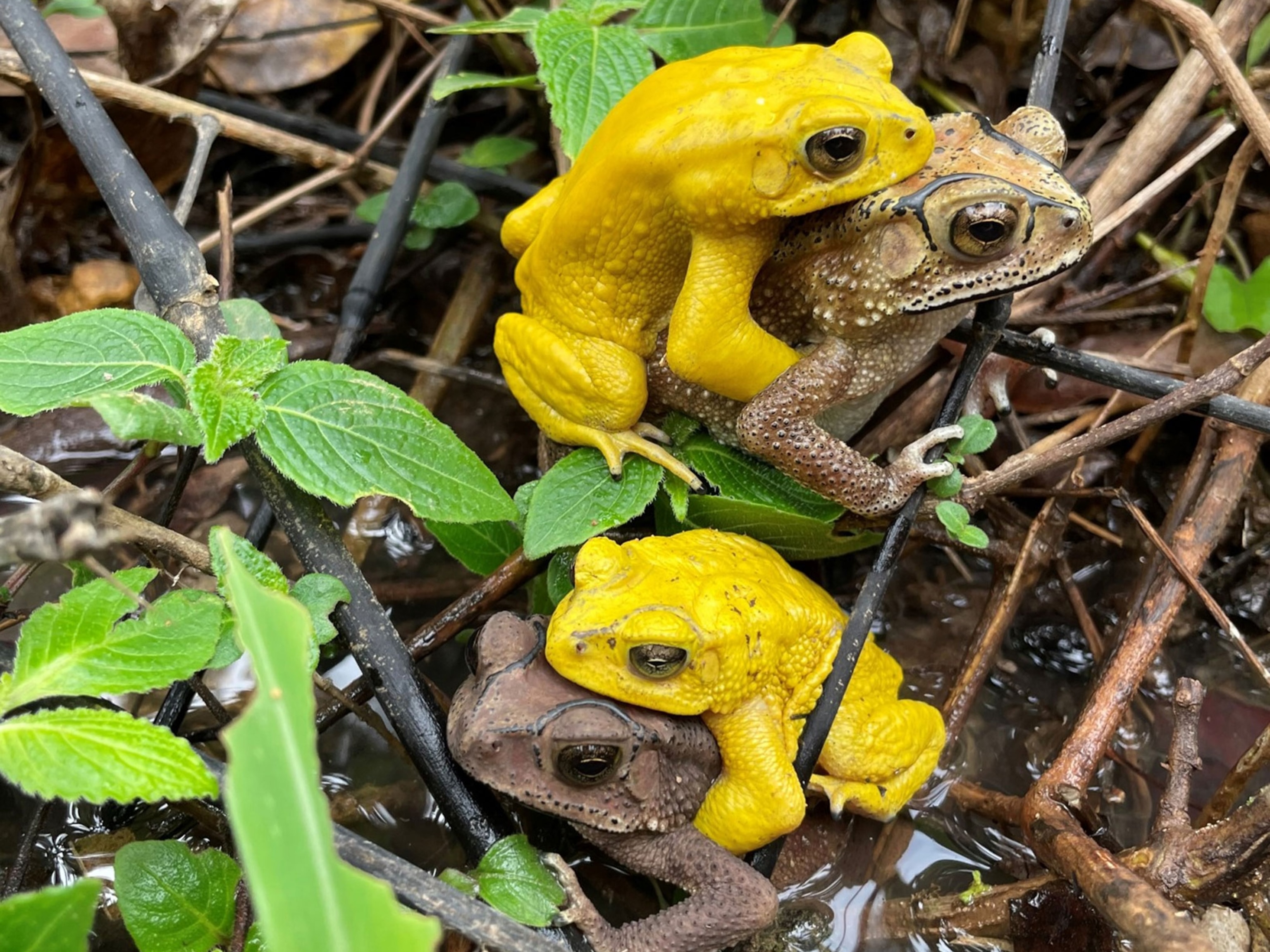
Madagascar Could Be on the Brink of Invasion by Asian Toad
If the amphibian gains a foothold in Madagascar, it could wreak havoc on the island nation's unique fauna.
The Asian toad looks poised to mount an invasion of Madagascar, potentially setting off an ecological disaster in a country known for its unique animal species.
About 92 percent of Madagascar's mammals and 95 percent of its reptiles are found nowhere else on Earth, according to the World Wildlife Fund. For animals that haven't evolved to deal with a predator like the Asian toad, disease and lack of defense are big concerns, researchers warn in a letter published today in Nature.
The biggest direct threat to Madagascar's native wildlife is the Asian toad's toxin, said Jonathan Kolby, a conservationist at James Cook University in Queensland, Australia, in an email interview. Native animals that try to eat this toad could find themselves ingesting their last meal. (Some species in Australia have faced a similar problem. Eating the invasive—and toxic—cane toad has ravaged populations of unique mammals.)
Another worry, says Kolby, is the Asian toad's indiscriminate appetite. It eats insects and small vertebrates like snakes, rodents, and other amphibians—populations that, on Madagascar, have never had to protect themselves from this predator.
The Asian toad could also spread the chytrid fungus and ranavirus, says Kolby. The illnesses caused by the fungus and the virus—which include thickening, sloughing, or hemorrhaging of the skin; lethargy; and cardiac arrest—have cut down many of the world's amphibian populations, driving some species extinct. (See "30 Amphibian Species Wiped Out in Panama Forest.")
A Stranger In Town
On March 26, a mining company working in Madagascar alerted researchers to an "unfamiliar amphibian" spotted in Toamasina (map), the country's largest seaport.
Kolby was conducting field surveys for amphibian diseases (partly funded by the National Geographic Society) when he heard about the sighting. As soon as he and his colleagues saw pictures of the animal, they knew it was an Asian toad.
That evening, Kolby went to Toamasina and caught six adults in a nearby swamp, confirming the toad's presence. Now Kolby, his colleagues, and local conservation groups are trying to discover the extent of the Asian toad's advance.
An Invader That Gets Around
It's likely the Asian toad entered Madagascar via shipping crates from Asia, Kolby said. Unverified reports suggest the toad has been present in Toamasina since 2011.
Native to nations including Bangladesh, Cambodia, China, and India, as well as parts of Indonesia, the Asian toad has made inroads into Papua New Guinea and Timor-Leste, among other countries.
The Asian toad is highly adaptable to different environments and can be a prolific breeder, says Kolby. Once it establishes itself in a new habitat, it can easily displace indigenous wildlife. Asian toads have also sickened people that have tried to eat them, and toad carcasses have contaminated wells and other water sources.
Eradication
Kolby and colleagues say an eradication program needs to be established quickly. That could include eliminating adult toads, removing eggs and larvae from breeding sites, draining ponds where more eggs could be laid, and installing low fences that would prevent the toad from reaching water, where it reproduces.
Kolby says it's not unusual to catch a species in the early stages of an invasion. The spread of American bullfrogs to several European locations is one example. What is unusual is acting quickly enough to have a realistic chance of eradicating the invader. (See "Rat Invaders: Islands Fighting Back Against Killer Rodents.")
Kolby is now working with conservation groups in Madagascar to raise awareness of the potential problem—and to gather enough funding and expertise to remove the Asian toad before it entrenches itself in a truly unique part of the world.
Follow Jane J. Lee on Twitter.





